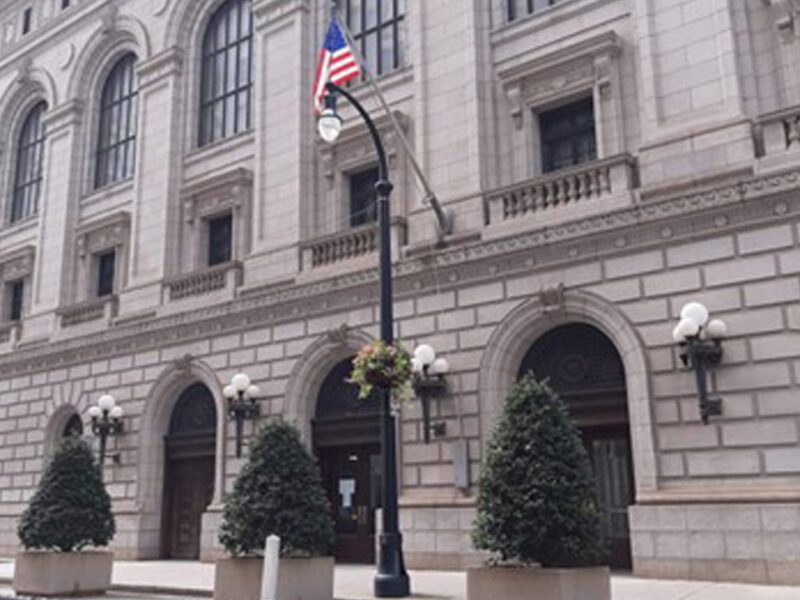
After enrollment dips, public schools hope for fall rebound
Florida Politics | by AP | June 16, 2021
Many students left over remote learning policies. Will they come back in the fall?
Ashley Pearce’s daughter was set to start kindergarten last year in Maryland’s Montgomery County school system. But when it became clear that the year would begin online, Pearce found a nearby Catholic school offering in-person instruction and made the switch.
Now Pearce is grappling with a big question: Should her child return to the local public school? She’s hesitant to uproot her daughter after she’s made friends, and Pearce worries that the district might go fully virtual again if there’s an uptick in coronavirus cases.
“It’s going to be fine if we stay where we are, and that stability for my family is probably the way we’re going to go.”
As many parents across the U.S. weigh the same concerns, school districts that lost enrollment during the pandemic are looking anxiously to the fall to see how many families stick with the education choices they made over the last year. In hopes of attracting students, many districts have launched new efforts to connect with families with young children, including blanketing communities with yard signs and enlisting bus drivers to call parents.
There are early signs that enrollment may not fully rebound, and the stakes are high. If enrollment does not recover, public schools that lose students eventually could see funding cuts, though pandemic relief money is boosting budgets for now.
Sustained drops in enrollment could also shift the demographics of America’s public schools. A first-of-its-kind analysis by Chalkbeat and The Associated Press found that enrollment declines varied by student race and ethnicity. Enrollment in preschool to 12th grade dropped by 2.6% across 41 states last fall, and the decline was steepest among White students, whose enrollment fell more than 4%.
White families’ decisions seemed especially swayed by whether their child’s public school offered in-person learning. States where more students were learning fully virtually tended to see larger declines among White students, the Chalkbeat/AP analysis found.
Meanwhile, the nation’s Hispanic student population saw the biggest shift from pre-pandemic trends, with enrollment dipping 1.5% last fall — a significant change, given that Hispanic students had been the country’s fastest-growing student group. That could be tied to some of the disruptions Hispanic families experienced during the pandemic, including higher rates of job losses and higher rates of death and hospitalization from COVID-19.
The data underscores the complicated task ahead for schools trying to reconnect with families who left public schools for different reasons and ended up at a wide range of alternatives.
“Districts might have this kind of ‘different strokes for different folks’ policy,” said Richard Welsh, an associate professor at New York University who’s studied student mobility. “‘We’re open for business and we’re committed to in-person learning’ could be more targeted to White families.”
On the flip side, Welsh said, “when you have districts that are giving tours about their safety protocols, those might be targeted more to their Black and Latinx families” whose communities were hit harder by the pandemic.
One such effort is underway in San Antonio, where the mostly Latino school district saw enrollment drop just over 5%. Officials there project that enrollment will rise this fall but not to pre-pandemic levels.
To build trust with families worried about in-person learning, district officials have been hosting town halls where families can ask experts questions about COVID-19 vaccines. The district will also continue to offer a fully virtual schooling option.
School officials are working to connect with every family who left or did not enroll their child in preschool or kindergarten, whether by phone or with a home visit, Superintendent Pedro Martinez said. The district has even tasked bus drivers with calling families between routes to encourage them to register their children.
And while Martinez is focused on the early grades, where enrollment dipped the most, he has his eye on older students too. Nearly every student in the district is from a low-income family, and many got jobs to help their families weather the pandemic. He’s concerned that so many teens continued learning remotely all spring so they could continue to work, though he understands the financial pressure.
“It’s so easy for a 16- or 17-year-old to prioritize work over school,” he said.
Certain pandemic schooling options, like putting young children in child care instead of kindergarten, will likely fall by the wayside. But some families may stick with private schools, especially if, like Pearce, they see them as a way to avoid uncertainty.
It remains unclear exactly how many students those schools absorbed. In some states that track it, like Delaware and New Hampshire, private school enrollment grew 5% or more this year, according to data obtained by Chalkbeat and the AP. But in several others, including New York, Louisiana, Indiana and Colorado, private school enrollment fell by 3% or more, indicating families didn’t switch en masse.
Notably, it wasn’t just the wealthy who left public schools. There were significant enrollment declines among students from low-income families and more affluent ones in the 35 states that provided data.
Other families might continue to home-school their children — a practice that shot up in the few states that tracked it. In New York and Virginia, for example, home schooling grew by more than 50% this year, though it remained a relatively rare choice.
Regardless, districts are now ramping up their recruitment efforts, hoping to build on the small upticks they saw over the last few months as in-person learning became more widely available.
In Spokane, Washington, enrollment fell by nearly 7% last fall, with the steepest declines among Asian, Black and White students. District officials have been reaching out to families via text messages and mailers and through community groups.
They’ve been emphasizing the district’s plan to shrink class sizes this fall, which they see as a selling point for families who want more individual attention for their children and for those with lingering fears about the coronavirus. The district assures families that it will offer both full-time in-person instruction and a virtual option.
“We want to create as much predictability, and try to mitigate a sense of unknown and fear, to the greatest extent possible,” Superintendent Adam Swinyard said, “and just let our families know that we’re ready and eager to be back.”
Researchers who track student demographics are also watching closely to see who returns. By the fall, it will be clearer if the enrollment shifts carry longer-term implications.
Some districts already expect the pandemic to have a lasting effect.
In Denver, officials estimate that enrollment will drop by 6% in the coming years — a rate nearly double what was predicted before the pandemic. Declining birth rates and rising housing prices that drive families away are big factors, but officials believe the pandemic exacerbated those losses, especially in the youngest grades. Kindergarten applications are down considerably for the upcoming school year.
The district’s planning director, Sara Walsh, said the total decline could be “pretty significant.” But she hasn’t given up on a turnaround: “I am hoping that maybe all of a sudden tons of kids show up.”





